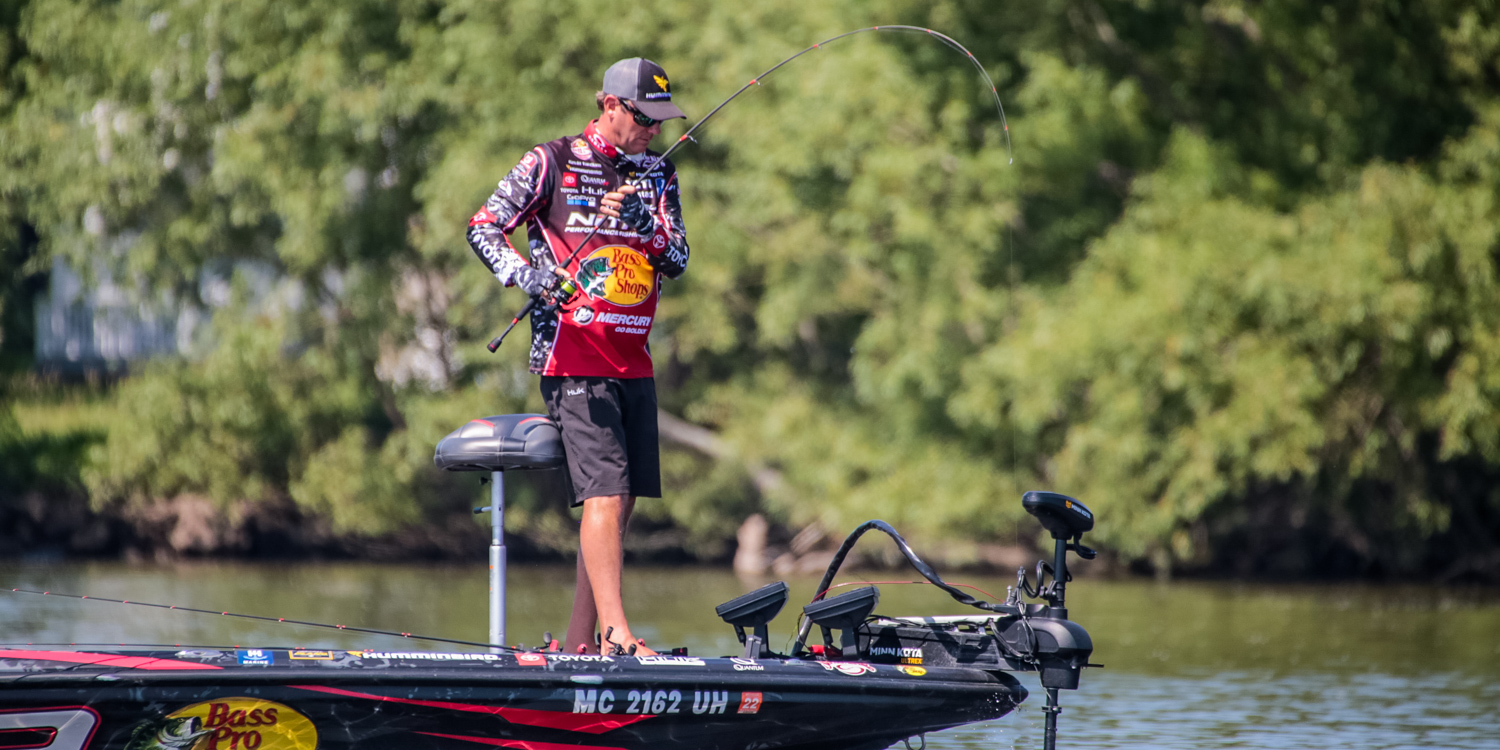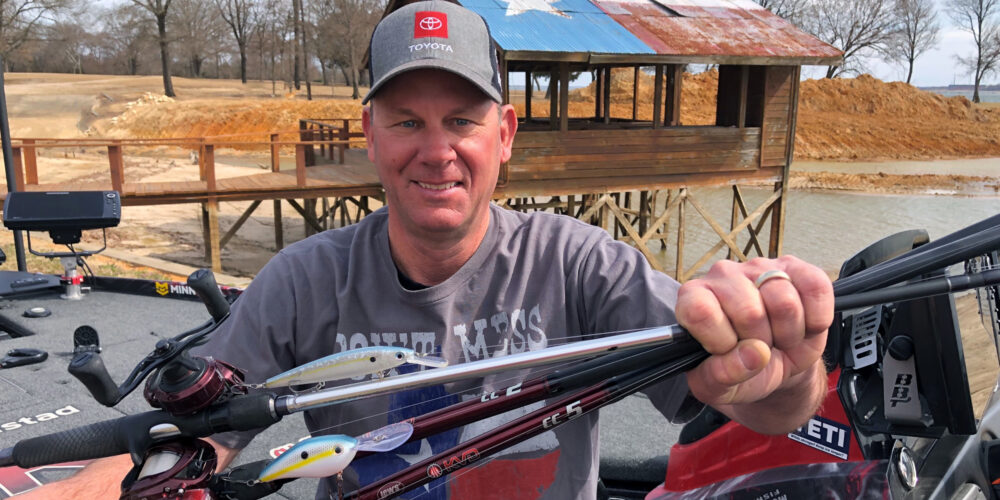As I discussed in my previous blog, finesse techniques have found a place in my tournament arsenal in the form of cleanup baits. After scouring a productive spot with heavier power approaches, I drop down to lighter line and finessier offerings to sort of “pick up the scraps” before leaving the spot.
I’ve narrowed my cleanup selection down to four deadly finesse techniques: a drop-shot, Neko rig, shaky head and Ned rig. No matter which one I use, 10-pound braid to 8-pound fluorocarbon leader, fused with an FG knot, is my go-to line setup. Obviously, that may change to higher tests with heavier cover or more colored water, but the 10-pound braid to 8-pound fluorocarbon is a great combo to start with.
With that, here’s a quick look at each finesse technique and my preferred conditions and baits for each.
Drop-Shot
A drop-shot is excellent for combating muddy, mucky or slimy bottoms where ground debris, algae or vegetation gums up your traditional bottom baits. By “suspending” the bait up off the gunk on the bottom, drop-shots are incredibly efficient tools.
I also favor a drop-shot whenever I’m fishing vertical, right under the boat, or “video gaming” on my front graph. A drop-shot allows me to get away with a little heavier weight for a faster drop without impacting the action of the bait, which also makes it a good choice for heavy current.
My primary lure choices for a drop-shot are a Baby Z-Too, Half Shell or Dream Shot on a Mustad Grip-Pin Edge 2X fine wire hook.
Neko Rig
A Neko is another excellent choice when dealing with gunky bottom composition. Since the hook is also above the weight on a Neko rig, it does a surprisingly good job of staying clean in the strike zone. I’ll drop a Neko vertically under the boat as well, but it also gives me the option of casting out around the boat more than a drop shot does.
As for the terminal end on a Neko, I like Mustad’s TitanX Wacky/Neko hooks. I stick to lead nail weights most of the time because I can cut excess weight off with side cutters to get a perfect fall for the conditions. If I’m fishing the Neko rig deep, I’ll get into my Plano EDGE Terminal Box of tungsten Neko weights in a 3/32-ounce size for a faster fall.
Shaky Head
When casting to specific targets like bushes, seawalls, riprap, standing timber, pilings or skipping docks, the shaky head becomes my cleanup peashooter of choice. This is especially true in the presence of clean, hard bottom like sand, gravel or rock. In general, the shaky head tends to be more of a shallow water bait to me, 15 feet or less. For this, I simply use a Strike King Tour Grade Shaky head with a 5-inch KVD finesse worm.
Ned Rig
Last but not least, the Ned rig has become quite the finesse fish catcher in recent years. This tiny, nothing-looking bait is the deal in goby-infested waters. I’ll never give up my trusty tubes in the Great Lakes, but I have certainly made room for a dedicated Plano EDGE Utility Box of Ned Ochos and Tour Grade Ned heads in my boat. When it comes to smallmouth, they love them.
The Ned is also a huge player in Central U.S. lakes and Ozark Mountain impoundments. If you’re facing clear water with clean, rocky bottoms on mixed-species lakes, the Ned rig is a cleanup king.
My Finesse Rods and Reels
As for spinning rods for these techniques, I tend to go with longer 7-foot-2 to 7-4 medium action rods when making long casts in open water, like with a Neko or Ned rig. The longer rods help with gathering up more line on the initial sweep set at long range. However, if I’m casting, skipping or even pitching to tighter targets with a shaky head, I tend to go to more of a 6-10 to 7-foot rod for short-range finesse work.
Years ago, I never thought that spinning rods and tiny baits would ever be such a big part of my tournament-fishing arsenal. Then I realized just how effective these techniques were at revitalizing a worn-out fishing spot. Since then, cleaning up with finesse has become a regular part of my game.






Leave A Comment